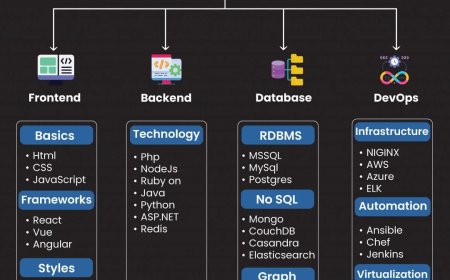Learn Vocal Riffs and Runs: A Complete Guide for Singers at Any Level
Master vocal riffs and runs with expert tips, exercises, and one proven course that can help you sing faster, cleaner, and more confidently.

Have you ever listened to a singer like Beyonc, Jazmine Sullivan, or Tori Kelly and wondered how they glide so effortlessly through vocal runs that seem impossible to replicate? If youve tried to copy a run and ended up in a pitchy mess, dont worry youre not alone. Riffs and runs can feel overwhelming at first, but with the right approach, anyone can learn them.
Whether you're a beginner or an experienced vocalist looking to add flair to your performances, learning vocal riffs and runs will give you a creative edge and unlock new ways to express yourself. With some patience, practice, and the right tools, youll be able to sing like the pros and even develop your own signature style.
And if you're serious about improving, you dont have to figure it out alone. A great place to begin is Cheryl Porters powerful and engaging course on vocal riffs and runs, which breaks down even the most complex runs into step-by-step, easy-to-follow lessons for singers at every level.
What Are Vocal Riffs and Runs?
Lets start by understanding the basics. Though often used interchangeably, riffs and runs are slightly different:
-
Vocal Riffs are short, repeated melodic phrases that usually appear in the same spot in a song. Think of them as rhythmic hooks stylish and catchy.
-
Vocal Runs are longer, fluid sequences of notes sung quickly and with control. They often descend or ascend in pitch and can cover wide intervals.
Both are used to decorate a vocal line, show skill, and evoke emotion. These techniques are especially popular in genres like gospel, R&B, pop, and soul but youll hear them in country, jazz, and classical music too.
Why Are Riffs and Runs So Important?
Great vocalists use riffs and runs to:
-
Personalize melodies
-
Show off technique without sounding forced
-
Connect emotionally with the audience
-
Add texture and complexity to otherwise simple lines
But heres the key: they only work when theyre clean, controlled, and intentional. Thats why learning how to execute them properly is crucial.
Common Struggles When Learning Runs
Before we dive into how to practice, lets talk about what typically goes wrong:
1. Lack of Pitch Accuracy
Most singers try to sing too fast before learning the notes. This leads to sloppy, inaccurate runs.
2. Poor Breath Support
Without proper breath control, your runs will sound weak or rushed.
3. No Structure or Muscle Memory
Its not enough to wing it. You need to train your voice to move through note patterns automatically.
4. Overuse
Yes, runs are cool but when every line has a run, they lose their power. Learning when and where to place a run is part of the artistry.
Step-by-Step Method to Learn Vocal Runs
Step 1: Start Simple
Pick a 3- to 5-note descending scale (like solfamiredo) and practice it slowly. Sing it on a vowel like ah or oo.
Step 2: Use a Metronome
Start at 60 BPM. Gradually increase speed only when each note is clean.
Step 3: Break Down Existing Runs
Pick a short run from a favorite song. Slow it down with software like Anytune or AudioStretch and isolate each note. Play it on a keyboard or app and try singing along.
Step 4: Repeat Daily
Repetition builds muscle memory. A 10-minute daily run drill will do more than one long session per week.
Step 5: Record Yourself
You might feel confident during practice, but listening back reveals gaps in timing, pitch, or tone.
Tools and Exercises That Work
Here are some practice tools to include in your warm-ups or vocal sessions:
Lip Trills
Great for flexibility and breath control. Try doing your runs on a trill to reduce tension.
Slides and Sirens
These help connect your registers and get your voice used to moving through pitch without strain.
Stair-Step Runs
Practice going up and down a scale in a stepped rhythm (1356531) before smoothing it out.
Riff Repeats
Pick one run and loop it 10 times at different tempos. The goal is to stay accurate, not fast.
How Cheryl Porters Method Helps You Level Up
Cheryl Porter has become a household name in vocal coaching and for good reason. Her method doesnt just teach youwhat to sing, it shows you how to feel it, own it, and repeat it with confidence. In her online course on vocal riffs and runs, you get:
-
Step-by-step breakdowns of iconic runs
-
Call-and-response training for better ear development
-
Techniques to improve breath, tone, and clarity
-
Fun, motivational coaching that keeps you practicing
Her system works for total beginners and advanced vocalists alike. If youve tried YouTube tutorials but still feel stuck, her structured approach might be exactly what you need.
How Long Does It Take to See Results?
With daily 1520 minute focused practice, most singers see clear improvement within 24 weeks:
-
Faster transitions between notes
-
Stronger breath support
-
Clearer tone and pitch on runs
-
More confidence in improvising your own riffs
Remember: speed is the last thing you add. Start slow, stay consistent, and results will come.
Tips for Creating Your Own Runs
Once youve mastered a few basic patterns, start experimenting:
-
Try altering a melody you already know with your own riff
-
Mix major and minor scale patterns for a new sound
-
Improvise during a bridge or ad-lib section
Eventually, youll stop copying and start creating. Thats when you know youre truly growing as a singer.
Common Mistakes to Avoid
-
Rushing: Singing too fast before youre ready leads to poor control
-
Over-styling: Too many runs in a song can sound excessive or distracting
-
Ignoring emotion: A run should always add to the feeling, not just the technique
-
Not warming up: Cold vocal cords are more likely to strain or crack
Final Thoughts
Riffs and runs arent just for superstar vocalists theyre for any singer who wants to add texture, emotion, and individuality to their voice. Whether youre performing live, recording at home, or singing just for fun, learning how to use riffs and runs can transform your sound.
And you dont have to go it alone. With expert resources like Cheryl Porters vocal riffs and runs course, you can follow a clear path that builds your skills layer by layer until those once impossible runs become second nature.
So start slow, stay steady, and sing boldly. Your next great vocal run is just a few practice sessions away.

























